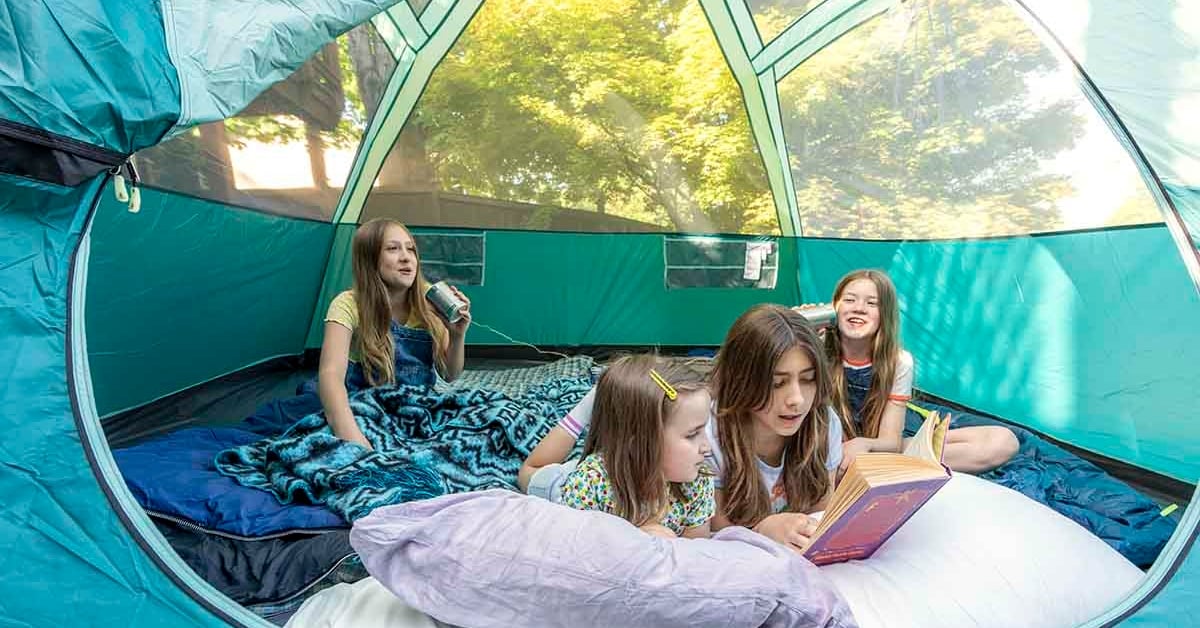Good sleep and happy moods
School is out and so are bedtime routines. “Some kids can handle disrupted sleep schedules better than others can,” says Vancouver-based Jennifer Garden, MSc, registered occupational therapist at Sleepdreams Sleep Professionals. Longer stretches of daylight and sweltering heat that carries into the night can impact children’s ability to fall asleep.
Also, despite the appeal of “relaxed” bedtimes, “kids who don’t sleep well become more sensory-sensitive,” says Garden, and some children really struggle with the lack of routine, which is reason enough to stick to the usual.
Consistency pays off
Our kids relish the magic of summer, as much we did once, so it matters that we mix summer fun with bedtime routines that maintain optimal sleep times. “Parents can promote a healthy secretion of melatonin (the sleep hormone) by helping kids have a regular bedtime and waking time, and by exposing them to morning daylight,” says Garden.
If sleep times get out of whack, adjust summer sleep schedules gradually. “It takes approximately two weeks to get back on track … depend[ing] on the age of the child,” says Garden. Go for increments of 10 to 15 minutes daily, and make sure to adjust not only bedtime but also wake time and mealtimes, too, which are key [to] the circadian rhythm.”
Summer sleep basics
Dark, cool bedrooms are best for sleep. Use blackout curtains if summer’s later sunsets interfere with sleep and, if needed, an unobtrusive nightlight.
Cool can be more difficult as summer heat sets in. Hot nights can increase the risk of fatigue and poor sleep quality, and they make it difficult for children to settle as body temperature needs to stay cool to enable sleep.
If air conditioning is not an option, there are alternatives. “Keep the bedroom dark during the day and keep the hot air out as much as you can,” says Garden. Running a fan with a bucket of ice in front of it or hanging damp bedsheets over an open window can also work.
Take it outside
- Set up the tent in the back yard, sleeping bags and all, and bring out some good adventure books to read together under lantern light.
- Count the stars together, once it’s dark enough and, if possible, go on an adventure: drive to a more secluded spot away from the city glare and notice the difference.
- Look up a drive-in movie for kids in your area; yes, pyjamas are just the right attire.
Create sleepiness
Getting kids outside to play can help to build tiredness. A cool bath or shower, putting away screens (at least one hour before bedtime), dimming lights, and reading together can all help to prepare for sleep. Cooling body temperatures approaching bedtime coincides with an increase in melatonin, which also helps with falling asleep.
Also, says Garden, “the sense of a loved one is … calming, especially for young children.” Their preferred toy or blanket can help them settle and feel comforted during the night. “For older children, you can have them wear one of your t-shirts.”
Foods for better sleep
Nutrient-dense, high-quality foods can help improve sleep, while a diet low in fibre and high in saturated fats can have the opposite effect.
Tryptophan, an amino acid present in many protein sources, serves as a precursor for melatonin production in the body. Include foods in your kids’ diets that are rich in tryptophan, such as poultry and cheddar cheese, firm tofu and edamame, milk and pumpkin seeds, and oats and eggs.
Magnesium plays an essential role for muscle function, and it is also associated with improved sleep and reduced anxiety. Pumpkin seeds and dairy are good sources, as are legumes, nuts, whole grains, and leafy greens.
Sleep matters
- Children between 5 and 13 years old need 9 to 11 hours of uninterrupted sleep per night, while those between 14 and 17 years need between 8 and 10 hours.
- Melatonin levels peak in early childhood and decrease as children transition into puberty and adolescence.
If your child is not getting enough magnesium from food, talk to your healthcare provider about supplementing. This also applies to vitamin D, as deficiency is associated with lower sleep quality. Vitamin D supplementation together with magnesium can also help reduce anxiety and alleviate some behaviours in children with ADHD, who can often have sleep problems.
Herbal teas such as chamomile, lavender, and lemon balm can be beneficial in inducing relaxation, but check for allergies or possible interactions with medication before trying. Try serving them iced to help keep things cool.
Remember, it takes time to adjust to different sleep conditions or recover from otherwise fun-filled events such as family visits and camping.
Balancing summer magic and good sleep routines may not always be easy, but it’s a part of what memories are made of … drifting off to sleep (eventually) knowing that summer doesn’t last forever―and you made the best of it!
Then and now
Parents of the 1970s had trouble getting their kids to sleep for many of the same reasons that today’s parents experience. They knew, in general, why sleep is so important, but as research has evolved, we’re learning much more about how critical high-quality sleep is to the healthy development of our kids.
Today’s kids, though, often tuck into bed with a powerful impediment to healthy sleep―their phones. In fact, 72 percent of 11- and 12-year-olds who were part of a large, long-term study of brain development and child health in the US had their own phones—and less sleep than those without phones. The advice from researchers? No screens for an hour before bedtime.
This article was originally published in the August 2025 issue of alive magazine.


